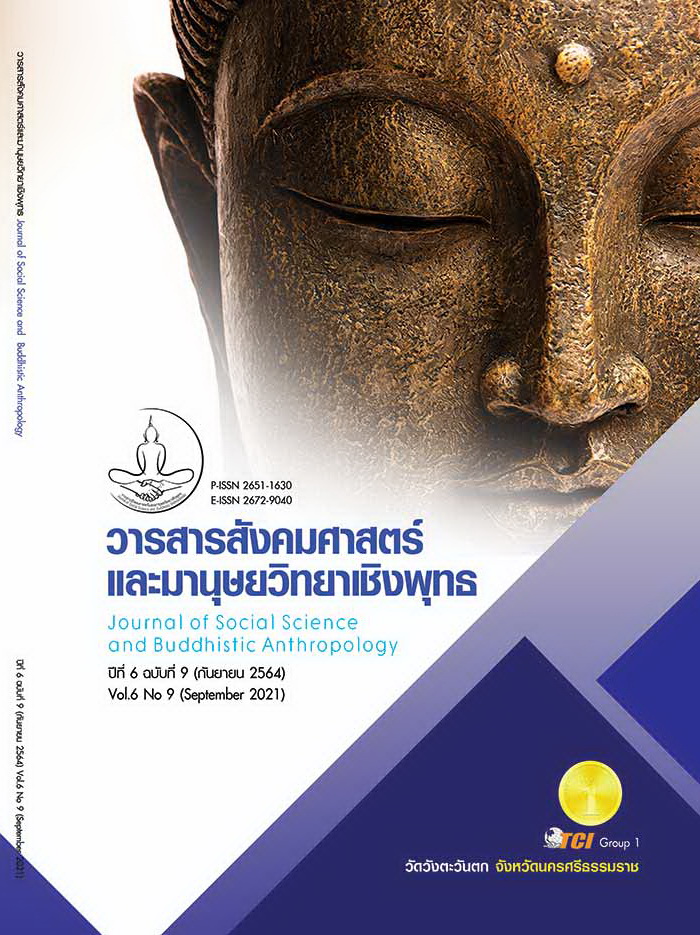A STUDY OF IMPROVING THE ROLE AND CAPACITY OF THE COMMUNITY PRESIDENT: CASE STUDY OF KHON KAEN MUNICIPALITY
Keywords:
Community President, role and responsibility, Khon Kaen MunicipalityAbstract
The Objectives of this research article were to 1) to study the role of the Community President; 2) to analyze problems related to the role of Community President; and 3) to propose guidelines for improving the role of the Community President. This study was conducted in Khon Kaen Municipality. Data were collected using qualitative methods, such as in-depth interviews with nine Community Presidents in Khon Kaen Municipality. Of these, seven had served at least two four-year terms, while the other two had served less than two terms This study had the following findings: 1) The role of the Community President is to be the coordination focal point between the government and the people. This involves informing local residents of important news from the government, or as the voice of the community to present needs or problems of the locality to the relevant government agencies. In general, the Community President looks after the order and livability of the community in all aspects; 2) The problems of the role of the Community President are related to the fact that the position is not a legally-appointed position, and lacked guidelines for how the position should be administered, or what the exact responsibilities are. Accordingly, the Community President is the equivalent of an ordinary resident of the locality. At the time of this study, most of the Community Presidents were senior citizens. There was little community interest or support for the Community President; 3) In order to resolves some of these problems, the position of Community President should be codified in law. There should be clear specifications of the role and responsibility of the President. There should be clear definition of the qualifications for an individual to serve as Community President. There should be training for Community Presidents in leadership to help lead their constituents to adapt and adjust to changing circumstances. There also should be appropriate compensation and welfare provided.
References
จินตวีร์ เกษมสุข. (2561). แนวคิดการมีส่วนร่วมของประชาชน เพื่อการพัฒนาชุมชนที่ยั่งยืน. วารสารวิชาการมนุษยศาสตร์และสังคมศาสตร์, 26(50), 169-186.
เทศบาลนครขอนแก่น. (2563). ลักษณะภูมิประเทศและทิศทาง. เรียกใช้เมื่อ 13 ตุลาคม 2563 จาก http://www.kkmuni.go.th/pdf-download/topography.pdf
นครินทร์ เมฆไตรรัตน์. (2563). การกระจายอำนาจ. เรียกใช้เมื่อ 13 ตุลาคม 2563 จาก http://wiki.kpi.ac.th/index.php?title=การกระจายอำนาจ
นพพล อัคฮาด. (2555). “มอง” หลักการปกครองท้องถิ่นในรัฐธรรมนูญฉบับ 2550 “ย้อน” แนวพระราชดาริการจัดตั้ง “การประชาภิบาล” ในสมัยรัชกาลที่ 7. วารสารรัฐศาสตร์และนิติศาสตร์ มหาวิทยาลัยราชภัฏกาฬสินธุ์, 5(1), 24-60.
พงศ์สวัสดิ์ ราชจันทร์. (2563). ศักยภาพ บทบาทหน้าที่ และอำนาจของกำนันผู้ใหญ่บ้านในปัจจุบัน. วารสารการบริหารนิติบุคคลและนวัตกรรมท้องถิ่น, 6(4), 101-115.
ภิรมย์พร ไชยยนต์. (2557). การกระจายอำนาจการปกครองท้องถิ่น: ศึกษากรณีการปกครองตนเองตามเจตนารมณ์ของประชาชนในระดับจังหวัด. กรุงเทพมหานคร: สถาบันบัณฑิตพัฒนบริหารศาสตร์.
ภูบดินทร์ วรชินา และกฤช วรรธน์โล่ห์วัชรินทร์. (2563). การศึกษาการดำเนินงานและการตอบสนองความต้องการของประชาชนของโครงการประชารัฐในจังหวัดขอนแก่น. วารสารวิชาการวิทยาลัยสันตพล: 6(1), 87-95.
วัชรพงษ์ หนูชัย และคณะ. (2558). การศึกษาเปรียบเทียบบทบาทของ ผู้ใหญ่บ้านในพื้นที่เทศบาลเมืองต้นเปากับประธานชุมชน ในพื้นที่เทศบาลเมืองแม่โจ้. กรุงเทพมหานคร: สถาบันบัณฑิตพัฒนบริหารศาสตร์.
วัชราภรณ์ จันทนุกูล และสัญญา เคนาภูมิ. (2559). แนวทางการจัดสวัสดิการสังคมระดับชุมชนอย่างยั่งยืน. วารสารวิจัยเพื่อการพัฒนาเชิงพื้นที่, 8(4), 3-14.
Michie, J. & Zumitzavan, V. (2020). “The impact of ‘learning’and ‘leadership’ management styles on organizational outcomes: a study of type firms inThailand”. Asia Pacific Business Review, 18(4), 607-630.








